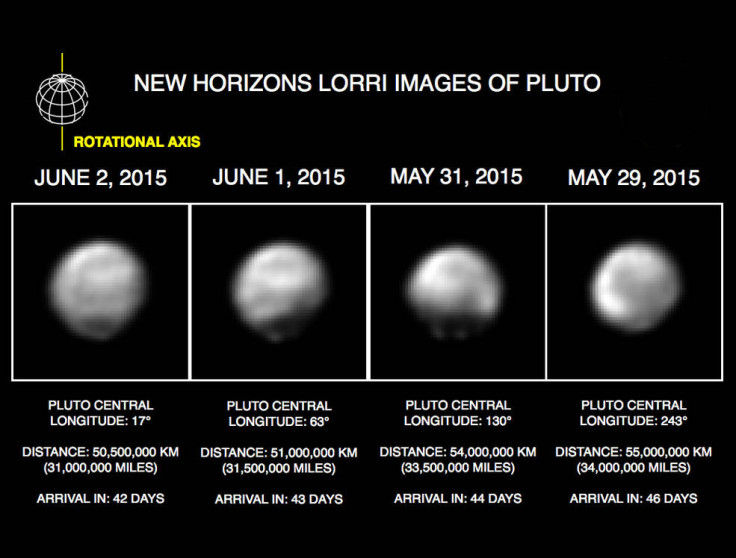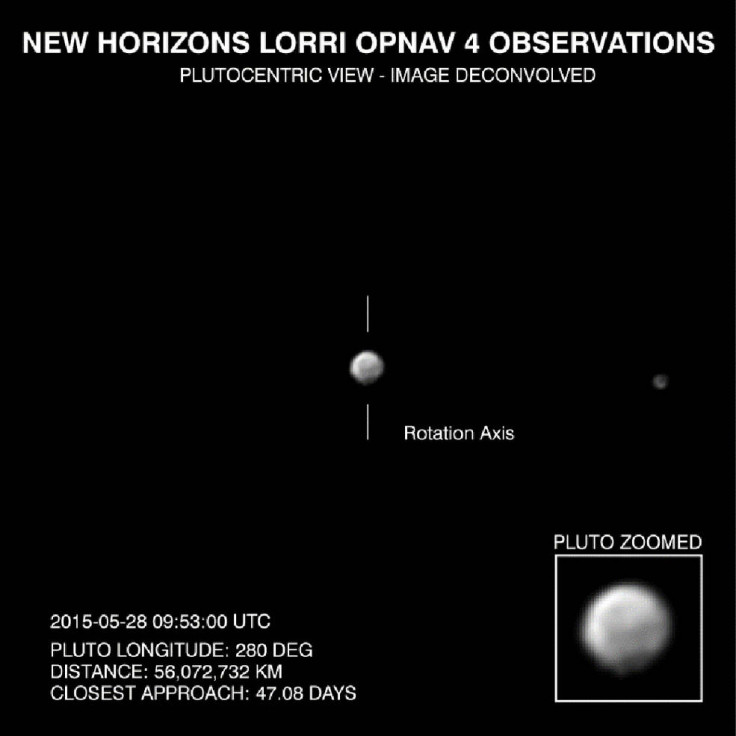Nasa New Horizons spots Pluto's bright and dark faces in latest images of 'complex world'

Nasa's New Horizons mission has returned new images of Pluto, showing the dwarf planet is a "complex world" with bright and dark terrain.
The spacecraft is due to complete its flyby of the planet on 14 July and is currently around 24 million miles (39 million kilometres) from Pluto.
The latest images came from New Horizon's Long Range Reconnaissance Imager (LORRI) and are, at present, the best views ever obtained of the icy dwarf planet.
Pictures were sharpened before being beamed back to Earth. Researchers note that this technique can sometimes produce artefacts so they will be reviewed to work out if all the details persist.
"Pluto's non-spherical appearance in these images is not real; it results from a combination of the image-processing technique and Pluto's large variations in surface brightness," Nasa said in a statement.

New Horizons Principal Investigator Alan Stern said that from 30 million miles away, the details emerging are revealing an "increasingly complex surface", with evidence of "discrete equatorial bright and dark regions".
"We can also see that every face of Pluto is different and that Pluto's northern hemisphere displays substantial dark terrains, though both Pluto's darkest and its brightest known terrain units are just south of, or on, its equator. Why this is so is an emerging puzzle," he said.
Little is currently known about Pluto – scientists believe it is extremely cold, with surface temperatures around minus 400F. Experts say it is probably covered in ice.
Hal Weaver, New Horizons Project Scientist, said: "We're squeezing as much information as we can out of these images, and seeing details we've never seen before. We've seen evidence of light and dark spots in Hubble Space Telescope images and in previous New Horizons pictures, but these new images indicate an increasingly complex and nuanced surface.
"Now, we want to start to learn more about what these various surface units might be and what's causing them. By early July we will have spectroscopic data to help pinpoint that."
© Copyright IBTimes 2025. All rights reserved.






















